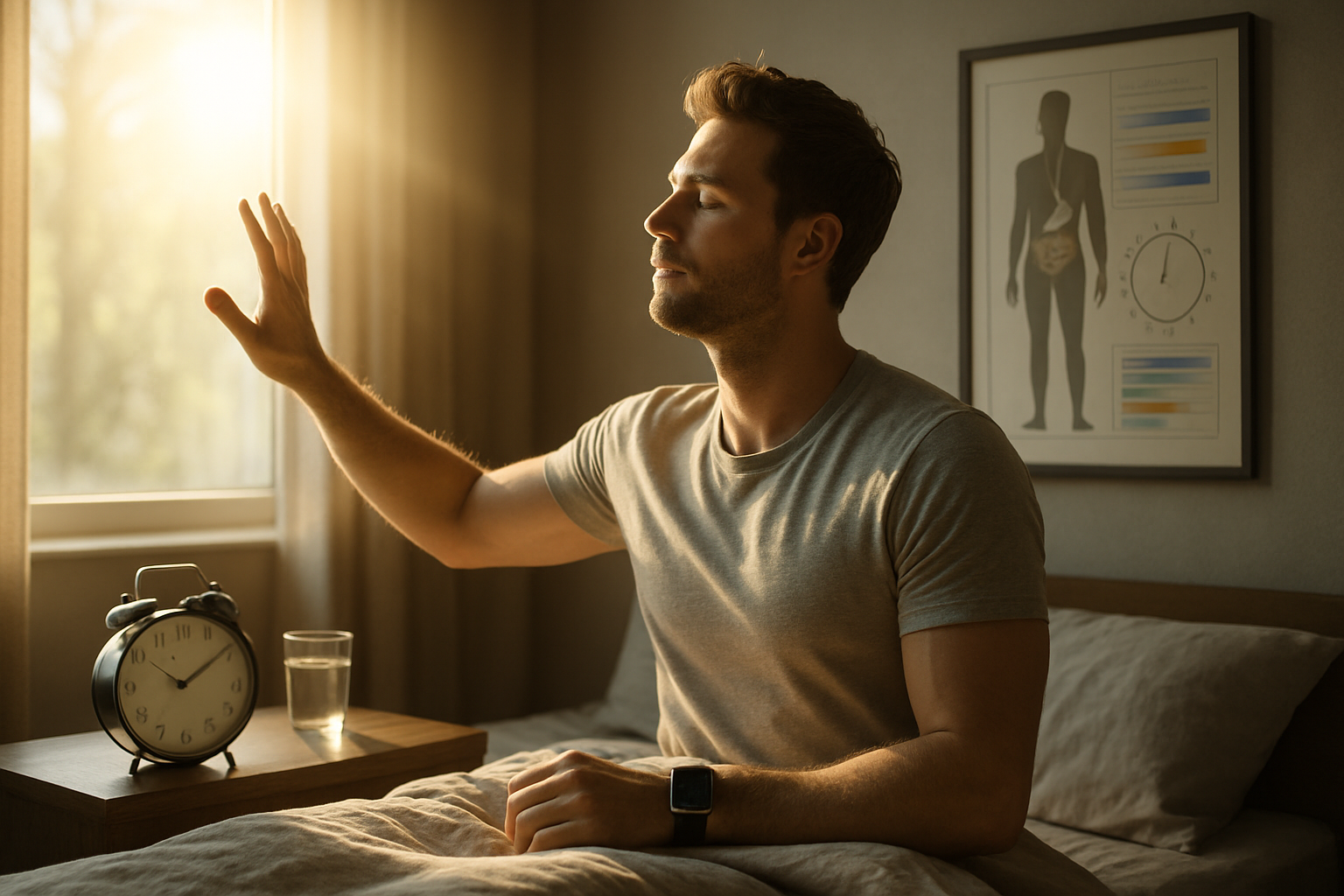Biohacking Your Circadian Rhythm: The Science of Light Exposure
Are you feeling constantly tired, struggling with sleep, or experiencing unexplained mood swings? The answer might lie in your relationship with light. Welcome to the cutting-edge world of circadian rhythm optimization, where mastering your exposure to light can revolutionize your health, energy, and overall well-being.

Historically, humans evolved in sync with natural light patterns, rising with the sun and resting at night. However, modern life, with its artificial lighting and digital screens, has disrupted this delicate balance. The consequences of this disruption are far-reaching, affecting not just our sleep but our overall health and cognitive function.
The Role of Light in Circadian Regulation
Light is the primary zeitgeber or external cue that synchronizes our internal clock with the external environment. Different wavelengths of light have varying effects on our circadian system. Blue light, which is abundant in sunlight and digital screens, is particularly potent in suppressing melatonin production and increasing alertness.
Research has shown that exposure to bright light in the morning helps to reset our circadian clock, improving sleep quality and daytime alertness. Conversely, exposure to blue light in the evening can delay the onset of sleep and reduce its quality. This knowledge forms the basis of circadian rhythm optimization techniques.
Techniques for Circadian Rhythm Optimization
Mastering your circadian rhythm involves strategic light exposure throughout the day. Here are some evidence-based techniques:
-
Morning light therapy: Exposing yourself to bright light for 20-30 minutes upon waking can help reset your circadian clock and boost mood and energy levels.
-
Blue light management: Use blue light filtering apps or glasses in the evening to minimize melatonin suppression.
-
Red light therapy: Exposure to red light in the evening can promote relaxation and improve sleep quality without disrupting melatonin production.
-
Light scheduling: Create a consistent light exposure schedule that mimics natural daylight patterns.
-
Dark therapy: Ensure your sleeping environment is completely dark to maximize melatonin production and sleep quality.
The Impact on Health and Performance
Optimizing your circadian rhythm through strategic light exposure can have profound effects on various aspects of health and performance:
-
Improved sleep quality and duration
-
Enhanced cognitive function and productivity
-
Better mood regulation and reduced risk of depression
-
Improved metabolic health and weight management
-
Increased physical performance and recovery
-
Strengthened immune function
Studies have shown that individuals who align their activities with their natural circadian rhythm experience better overall health outcomes and reduced risk of chronic diseases.
Challenges and Considerations
While the benefits of circadian rhythm optimization are clear, implementing these strategies can be challenging in our modern, 24/7 society. Shift workers, frequent travelers, and those with demanding schedules may find it particularly difficult to maintain consistent light exposure patterns.
Moreover, individual variations in circadian preferences (chronotypes) mean that one-size-fits-all approaches may not be suitable for everyone. It’s essential to experiment and find a rhythm that works best for your lifestyle and biology.
Illuminating Facts: Shedding Light on Circadian Health
-
The human circadian rhythm is slightly longer than 24 hours, averaging about 24.2 hours
-
Exposure to just 1 lux of light (equivalent to moonlight) can affect circadian rhythms
-
Blue light exposure in the evening can suppress melatonin production for up to 3 hours
-
Morning light exposure can increase cortisol levels, promoting wakefulness and energy
-
Plants also have circadian rhythms, which affect their growth and flowering patterns
Embracing the Light: A Brighter Future for Health
As we continue to unravel the complexities of our internal clocks, it’s clear that light plays a crucial role in our health and well-being. By understanding and optimizing our circadian rhythms through strategic light exposure, we can unlock a wealth of benefits, from improved sleep to enhanced cognitive function and overall health.
The key lies in aligning our modern lifestyles with our biological needs, creating a harmonious balance between our internal clocks and the external world. As we step into this enlightened approach to health, we open the door to a brighter, more energized, and healthier future.




